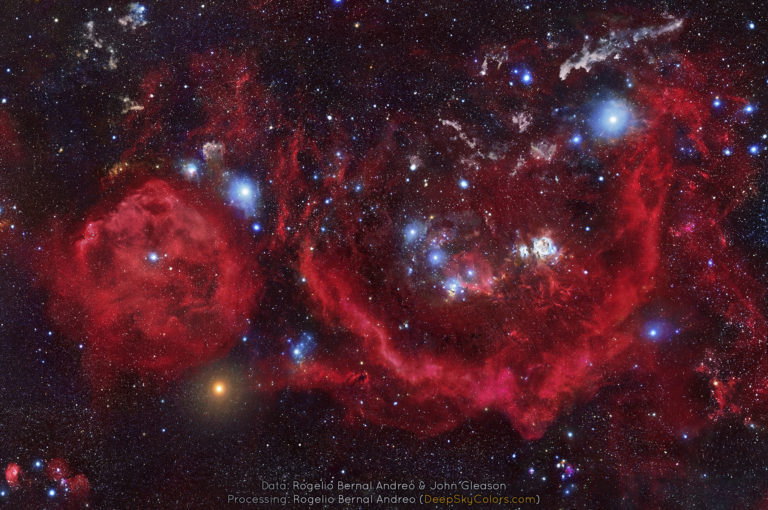流向心宿二的暗河
2020 May 16 The Dark River to Antares Composite Image Credit & Copyright: Paul Schmit Explanation: A dark river seems to flow through this sky from the horizon toward colorful clouds near red giant star Antares. Murky looking, the dark river is a dusty nebula obscuring background starlight near the central Milky Way, although the dark dust nebula contains mostly hydrogen molecular gas. Dust scattering starlight around Antares, alpha star of Scorpius, creates the unusual yellow-hued reflection nebula. Above it, bright blue double star Rho Ophiuchi is embedded in more typical dusty bluish reflection nebulae, with red emission nebulae also scattered through the interstellar space. Globular star cluster M4 looks almost like a bright star just above and right of Antares, though it lies far…



